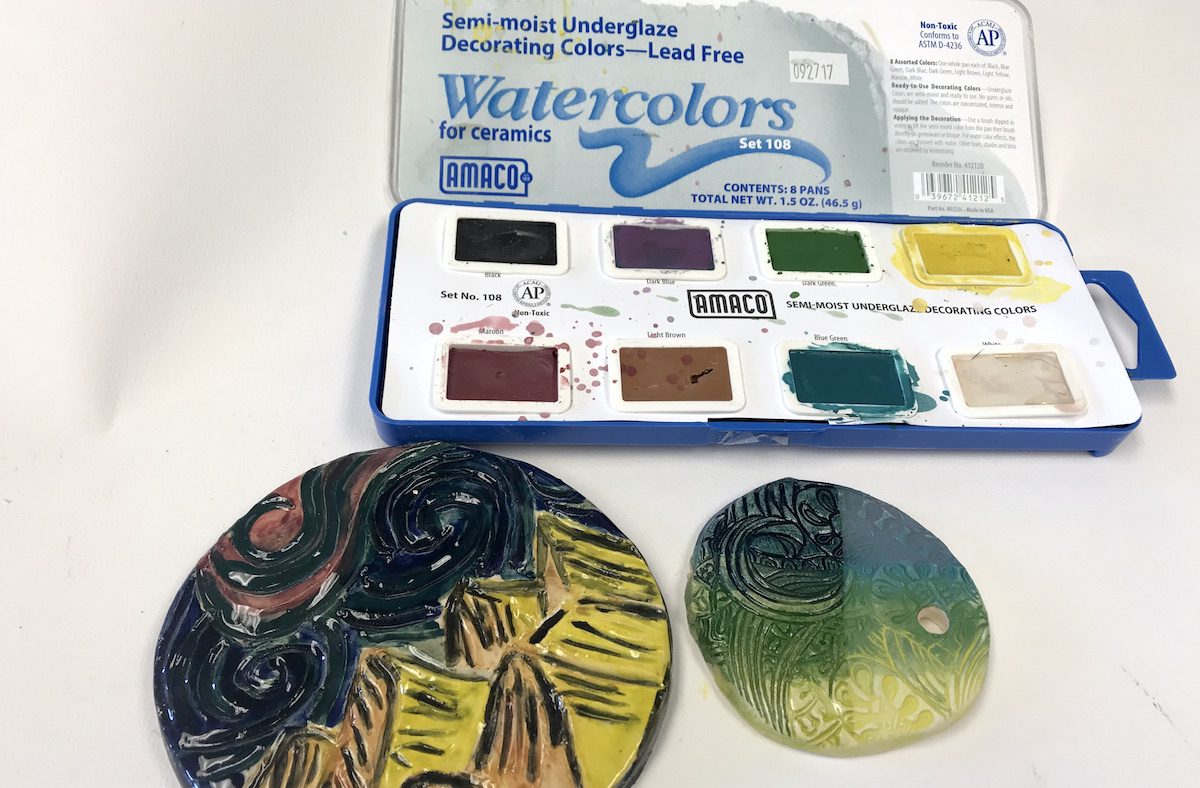Clay is a magical medium for students. One of the most magical parts is when a glazed clay piece comes out of the kiln! Students always ooh and ahh over the shiny, glossy results. But, a few years ago, I opened up the kiln to reveal glaze-fired pieces and didn’t get a feeling of excitement. I noticed my students’ pieces all looked the same: solid colors, maybe one color on the inside and one on the outside. There were a variety of colors, but these clay pieces seemed dull. That’s why I started using underglazes.
If you’re looking for new ways to liven up the color on your clay pieces, try one of the following 6 techniques.
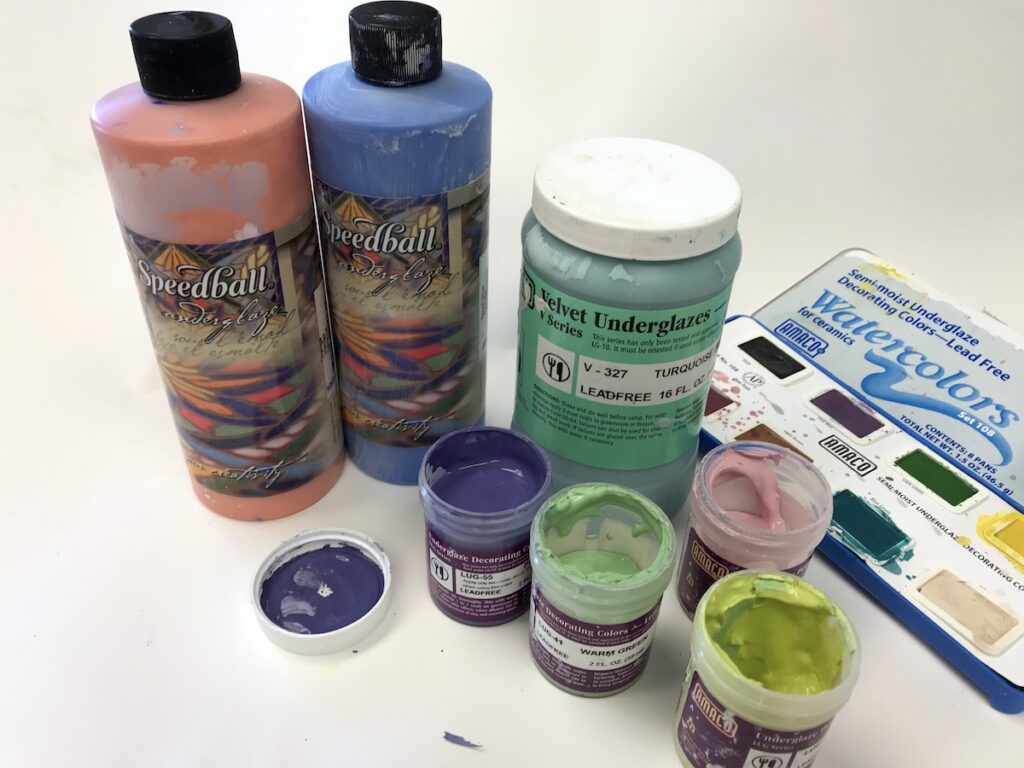
1. Underglaze on Wet Clay
The beauty of underglaze is it can be used on either greenware or bisque-fired clay. That said, it’s important to remember that bone-dry clay is one of the most fragile states. So instead, try using it when the clay is leather-hard to prevent potential disasters. The image below shows underglaze applied to leather-hard pieces that are ready to be bisque-fired.
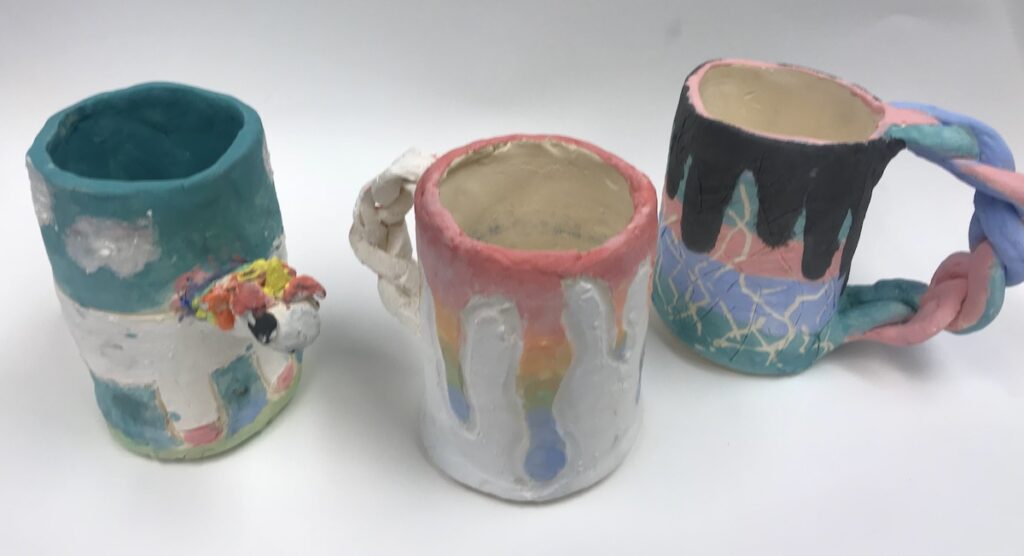
One of the advantages of using underglazes is you can mix the colors to create a painterly effect. To bring out their full beauty, add a coat of clear glaze as seen below.
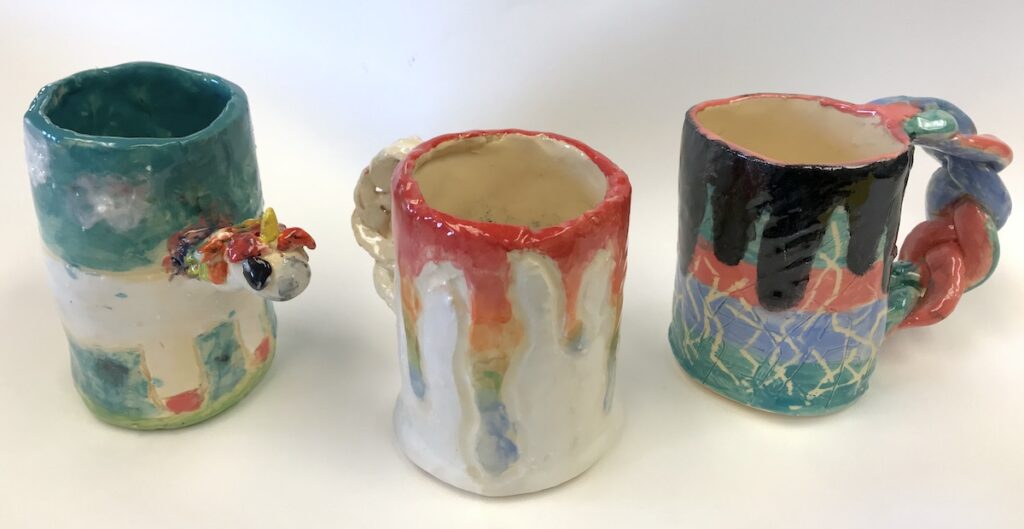
2. Sgraffito with Underglaze
Sgraffito is a decorative technique in which an artist scratches through a layer of glaze to reveal the clay body beneath. To achieve this look, first apply a layer of underglaze to a wet or leather-hard vessel and let the glaze dry. Then, using a tool like a loop tool, carve through the glaze to the clay body below. The result is a stunning, high-contrast piece.
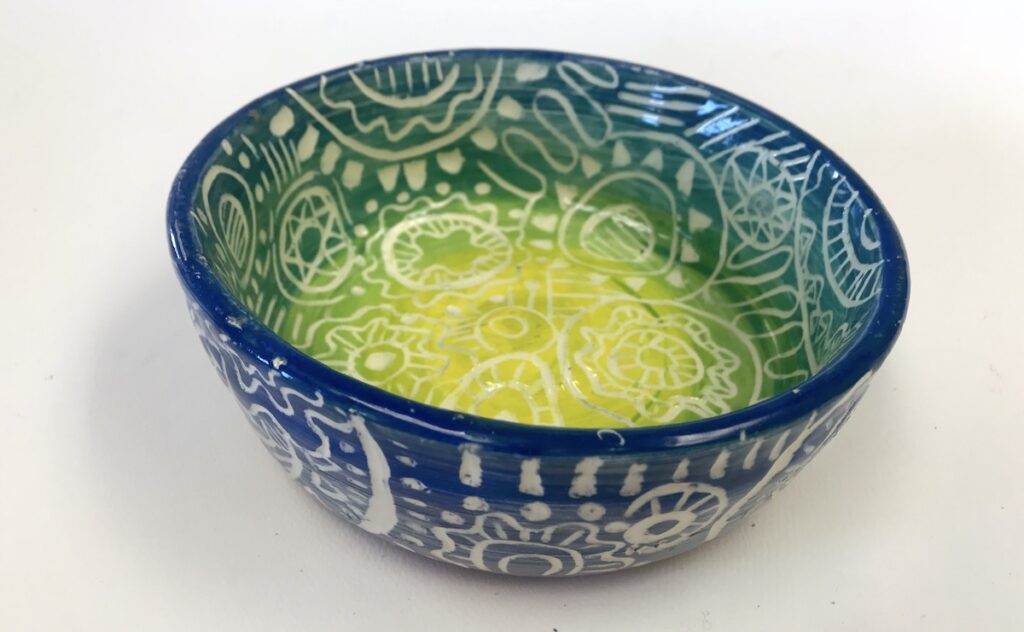
Note that although this technique technically works with wet clay, leather-hard clay works best. At the leather-hard stage, the shape won’t change as the tools press into the clay. Do not try the sgraffito technique on bone-dry clay, as it will produce a great deal of clay dust.
Using underglazes in various capacities is just one way to take your ceramics program to the next level. If you’re looking for even more innovative ideas, be sure to check out the Studio: Ceramics Course and the Hand-Built Ceramics PRO Learning Pack.
3. Underglaze on Bisqueware
Many commercial underglazes are made to work on greenware and bisqueware. This means underglazes are super versatile and can potentially save you time if you are running a tight firing schedule.
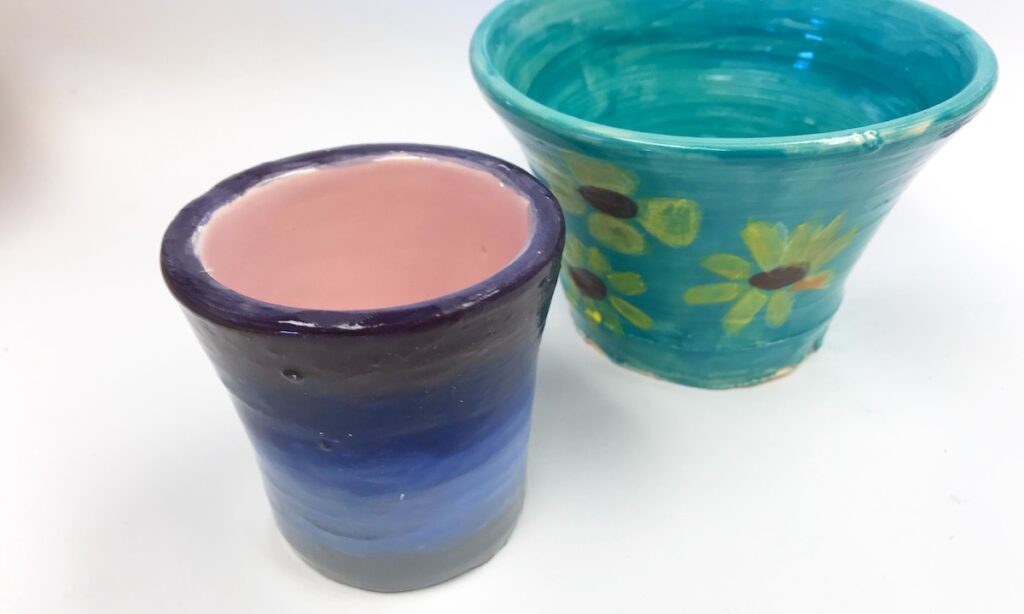
Using underglaze on bisque-fired clay has 5 advantages.
- The vessel is less fragile.
- You don’t have to worry about the underglaze getting the clay body too wet.
- Students can work almost as if they are painting.
- Students can add small details.
- Students can blend and mix the exact colors they want to use.
4. Draw with Underglaze
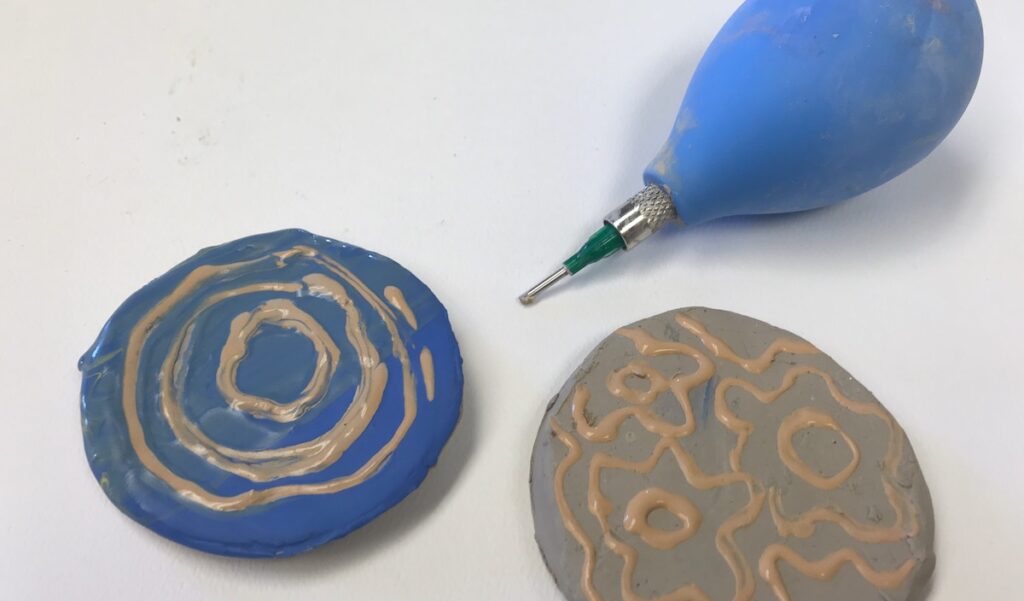
Underglaze can be used similarly to the slip trailing technique. Unlike slip trailing, the underglaze will not create a great deal of additive texture. It will, however, provide beautiful and precise details to any clay vessel. Just fill a small precision squeeze bottle with underglaze and students can draw out their designs.
5. Use Watercolor Underglazes
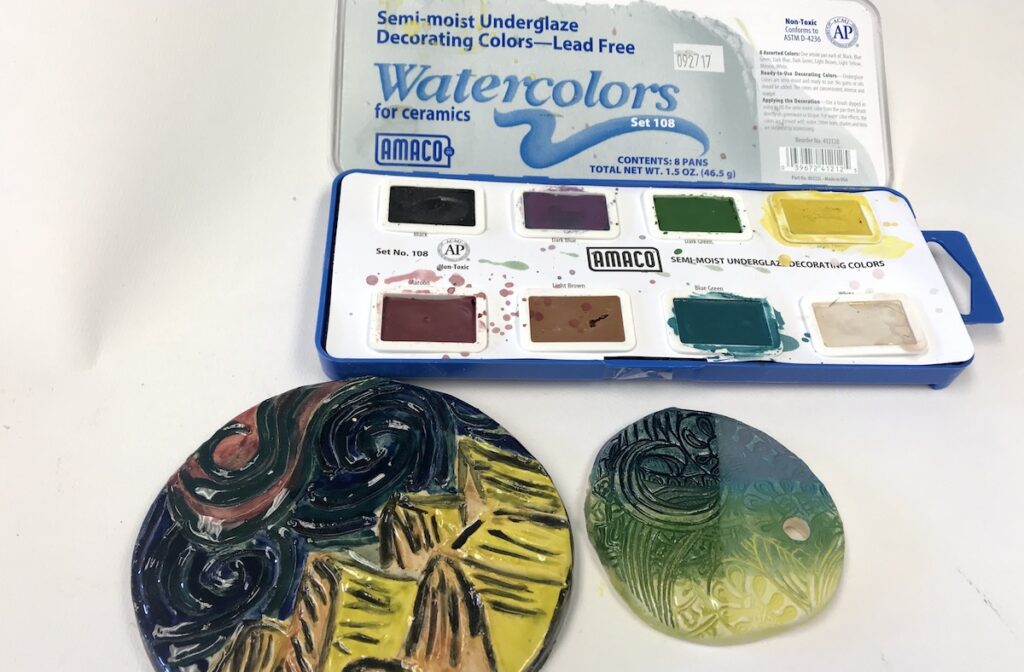
Watercolor underglazes work best on bisque-fired pieces since a great deal of water is needed to apply them. Using this type of underglaze can achieve painterly effects. The colors blend seamlessly, providing more dimension in pieces. On the test tile above, you can see the difference one coat of clear glaze makes to the watercolor surface.
6. Underglaze Pencils
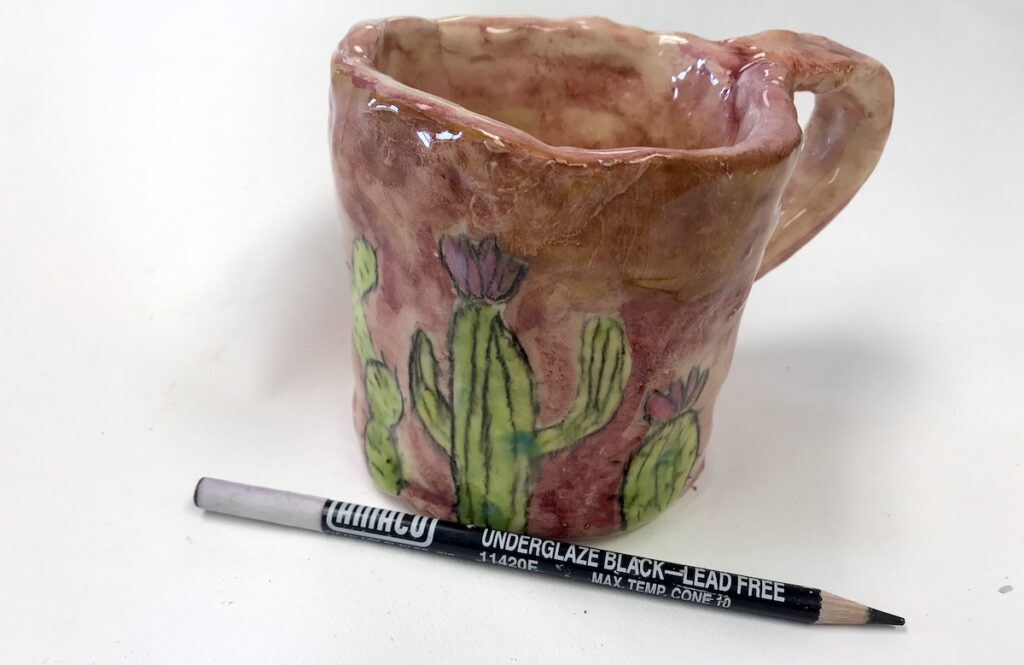
Using underglaze pencils is an excellent solution for students who prefer drawing over painting. They must be used on bisque-fired clay. Underglaze pencils will show through glaze and underglaze allowing for more defined shapes and detailed drawings. They can also be used to write students’ names on pieces or to label your glaze test tiles.
If you’re looking to explore more clay coloring options with your students, try out one of these underglaze techniques. Exposing your students to any of these processes will allow for more variety in their work and produce stunning results!
Do you use underglaze in your classroom? What is your favorite brand?
Do you prefer underglaze or glaze? Why?
Magazine articles and podcasts are opinions of professional education contributors and do not necessarily represent the position of the Art of Education University (AOEU) or its academic offerings. Contributors use terms in the way they are most often talked about in the scope of their educational experiences.
